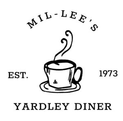Breakfast and brunch feature some culinary staples that everyone knows and loves. People come out in droves on the weekend to order pancakes, chicken and waffles, eggs benedict, and the always-in-style french toast based on taste and preference. But sometimes, people don’t think too much about where each dish first came from when it comes to these classic dishes. However, countless people the world over have repeatedly asked one question—is french toast really French?
The short answer is no, but it’s slightly more complicated than that.
What Is French Toast?
Aside from a breakfast treat and culinary mainstay, french toast consists of bread that has been transformed into a smooth and tasty texture thanks to soaking in a bath of eggs, milk, and sugar. Traditionally, the bread used in french toast tends to be older and, in some cases, stale before it gets soaked in the mixture.
The Big Question: Is French Toast Really French?
Tracing the history of this dish can drive historians mad trying to find its country of origin. While there is a dish in France that shares the same recipe as the Sunday brunch staple, the French do not refer to it as such. In France, what people across the globe call “french toast” commonly refer to it as “pain perdu.”
As with a majority of culinary dishes that gained a foothold in the American food scene, french toast did not originate in the United States. Tracing the meal’s origins back across the ocean leads us on a culinary adventure through time that takes us back to 15th Century France, with the earliest instance of a dish like french toast being found in Ancient Rome circa the 5th century BC.
How Pain Perdu Became French Toast
Pain perdu remains a classic French dish that traces back to the 15th century and King Henry V’s court. In a bid to not waste bread that had gone stale, his court created the dish “pain perdu,” which translates to “lost bread.” Utilizing the scraps of stale bread, chefs of the era significantly reduced waste and created a culinary staple in the process.
The first instance of pain perdu reaching distant shores and being rechristened comes in 17th century England. When the dish started popping up in English kitchens, it was under the name “french toast.” From there, the plate went to Ireland and then across the Atlantic Ocean during the Great Famine to the land of new opportunity—The New World, aka the future United States.
What’s In A Name?
While pain perdu exists in France and has remained a culinary staple, the rebranding took place when the dish moved abroad. Part of the reason for the name change stemmed from an economic and perception perspective. Calling something “French” gave it an air of sophistication and allowed unscrupulous chefs to add a couple of dollars to the price tag.
What Makes French Toast Unique?
While past entrepreneurs used the allure of supposed “French” cuisine to get people in the doors and order french toast, people kept coming back thanks to the taste and how easily combinable the dish became. You can top french toast with everything from maple syrup, powdered sugar, fresh fruits, whipped cream, and so much more to create truly unique culinary dishes that bring customers back for more.
Now that we’ve demystified the classic french toast, it’s time to eat one of the best french toasts in all of Yardley, PA! Stop by Mil-Lee’s Yardley Diner to get a taste of what makes our version so delectable!


